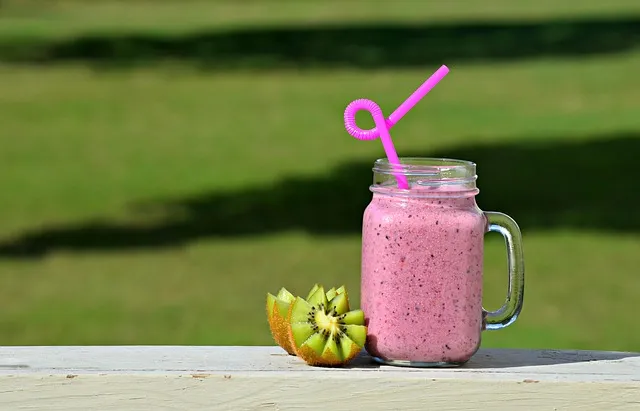
Strain on other muscles, like your back and shoulders, will affect your posture and the performance of the device and will increase the amount of energy needed to use your device. Individual prostheses will differ depending on the level of amputation, a person’s physical abilities, and their personal goals and needs. Your prosthetist is responsible for making design recommendations and creating a device that is custom-made to fit your limb and suit your lifestyle. Major leg amputations are those performed at or above the ankle joint’either above or below the knee.
Losing weight quickly is a common goal for many people, but resorting to extreme measures like amputation is not only dangerous but unnecessary. There are several effective ways to shed pounds without putting your health at risk.
The first emphasizes that although pain is a subjective and individual experience, when possible, it should be assessed with standardized and validated tools. Successful pain management postamputation promotes enhanced recovery, higher patient satisfaction, and lower cost of care. To optimize effective residual limb muscle activity, the muscle should be stabilized under near physiologic tension. Correct muscle tension varies from case to case, and the primary determinants of appropriate tension level remain somewhat amorphous.
The more skin surface available for contact with the prosthetic socket, the less pressure will be applied to each unit area of skin surface. A cylindrical shaped residual limb with muscular padding presents fewer skin problems than the bony, atrophic tapered residual limb. The team approach to amputee rehabilitation leads to a more enlightened and successful healing, and it is important to remember that the surgeon is but one member of the amputation rehabilitation team. The surgeon can benefit from the wisdom and perspectives of the other team members throughout all phases of the amputation process. The surgeon would be wise to encourage the opinions of his teammates, and wiser still to take these opinions into his calculated and comprehensive consideration. It is a good idea to know about warranties and what to expect from your prosthetist.
1. Adjust your diet
Visit the How to Find Support page to explore the many different ways you can connect with other individuals with limb loss and limb difference both locally and across the country. This CPG represents the most recent publication in a series of 3 guidelines related to the rehabilitation care of persons with amputations. Although there has been methodology evolution over time, all of these CPGs have used a structured development process to assure high-quality and clinically relevant products. One of the limitations of the CPG development process is that the literature review was restricted to only 10 key questions and 10-yr period. The development of this type of CPG is also very time-consuming and labor-intensive. This large investment in resources may be hard to replicate either within or outside of the federal sector in the future.
One of the most important factors in weight loss is maintaining a healthy diet. Focus on eating whole, unprocessed foods like fruits, vegetables, lean proteins, and whole grains. Limit your intake of sugar, unhealthy fats, and processed foods to see significant results.
2. Increase physical activity
Exercise is crucial for losing weight and improving overall health. Aim for at least 150 minutes of moderate-intensity exercise each week, such as brisk walking, cycling, or swimming. Incorporating strength training into your routine can also help build muscle and boost your metabolism.
Some methods have included cauterizing the nerve ends using chemicals or heat, burying the nerve in bone, encasing the nerve in impervious material, ligating the nerve or injecting the nerve with a variety of chemicals. Other methods include sewing the sectioned nerves to other nerves or sewing them back onto themselves, thereby creating a nerve loop. Others methods entail simply dividing the nerve and allowing it to retract. After arm amputation, most people are fitted for an artificial arm (an upper-limb prosthesis). Components may include fingers, a hook or hand, a wrist unit, and, for an above-the-elbow amputation, an elbow unit. Movement of the hook or hand is controlled by movement of the shoulder muscles.
Articles were excluded based on established review criteria resulting in 74 studies being considered as evidence addressing one or more of the identified key issues. The identified literature was evaluated and graded using the National Academies of Science GRADE criteria. Eighteen recommendations were confirmed with four having strong evidence and workgroup confidence in the recommendation.
3. Stay hydrated
Drinking plenty of water throughout the day can help control hunger, boost metabolism, and aid in digestion. Aim to drink at least eight glasses of water per day and avoid sugary beverages that can add unnecessary calories to your diet.
4. Get enough sleep
Getting an adequate amount of sleep is essential for weight loss and overall health. Lack of sleep can disrupt hormones that regulate appetite and metabolism, leading to weight gain. Aim for 7-9 hours of quality sleep each night to support your weight loss goals.
5. Seek professional guidance
If you’re struggling to lose weight on your own, consider seeking help from a healthcare professional or a registered dietitian. They can provide personalized recommendations and support to help you reach your goals safely and effectively.
Remember, losing weight takes time and effort, but with dedication and patience, you can achieve your desired results without resorting to extreme measures like amputation. Focus on making sustainable lifestyle changes that promote long-term health and well-being.




